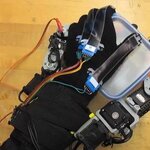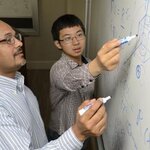Mathematics

Depending on the analysis strategy used, estimating treatment outcomes in meta-analyses may differ and may result in major alterations in the conclusions derived from the analysis, according to a study in JAMA which could easily apply to all fields.
Meta-analyses of randomized clinical trials are generally considered to provide among the best evidence of efficacy of medical interventions. They should be conducted as part of a systematic review, a scientifically rigorous approach that identifies, selects, and appraises all relevant studies. Which trials to combine in a metaanalysis…

Money can't make you happy but perhaps math can predict how much less unhappy you will be than if you lived in poverty.
The happiness of over 18,000 people worldwide has been predicted by a mathematical equation, with results showing that moment-to-moment happiness reflects not just how well things are going, but whether things are going better than expected.
The new equation accurately predicts exactly how happy people will say they are from moment to moment based on recent events, such as the rewards they receive and the expectations they have during a decision-making task. Scientists found…

An algorithm works for diagnosing pediatric patients with suspected appendicitis and that reduces the utilization of computed tomography (CT) scans, without affecting diagnostic accuracy.
Acute appendicitis is the most common cause of acute abdominal pain in children. Appendicitis occurs when the appendix becomes inflamed and filled with pus. CT scans are often used to diagnose acute appendicitis because they are accurate, widely available and have the ability to provide clinicians with advanced information in appendicitis cases suspected of complications.
However, CT scans are expensive and…

An MIT robotic device is worn around the wrist and basically works like two extra fingers adjacent to the pinky and thumb.
A novel control algorithm enables it to move in sync with the wearer's fingers to grasp objects of various shapes and sizes. Wearing the robot, a user could use one hand to, for instance, hold the base of a bottle while twisting off its cap. The robot, which the MIT researchers have dubbed "supernumerary robotic fingers," consists of actuators linked together to exert forces as strong as those of human fingers during a grasping motion.
To develop an algorithm to…

Weddings are a lot of stress, primarily for women but, in 19 states, lots of men as well.
Math can ease some of the burden - at least when it comes to cutting the cake. But first let's show how it works with just two people. Believe it or not this topic has generated a substantial amount of literature in the last 20 years. A cake is, of course, a metaphor for a divisible, heterogeneous good to a mathematician, and there an 'adjusted winner' can be created.
An algorithm in The Mathematical Intelligencer shows how to optimally share cake efficiently, in equal pieces and in such a way that…

Dan Spielman, a Yale computer scientist, wanted to model complex online communities like Facebook, hoping to gain insight into how they form and interact. That's one of the precepts of Science 2.0, understanding how people can participate and scientists can collaborate without being drowned in a lot of 'noise' before being put on the right path to either.
A colleague in Jerusalem observed that aspects of Spielman’s research brought to mind a math problem that had been stumping people since Dwight Eisenhower was in office — the Kadison-Singer math problem. The 1950s? A puzzle that wasn't even…

Platonic solids are regular bodies in three dimensions, such as the cube and icosahedron, and have been known for millennia. They feature prominently in the natural world wherever geometry and symmetry are important, for instance in lattices and quasi-crystals, as well as fullerenes and viruses
Platonic solids have counterparts in four dimensions. Swiss mathematician Ludwig Schlaefli and Alicia Boole Stott showed that there are six of them, five of which have very strange symmetries. Stott, the third daughter of mathematician George Boole, is best known for establishing the term…

They're data mining our children, notes Politico writer Stephanie Simon. She is talking about education technology startup Knewton and their use of data analytics to find out how kids think. They want to be able to predict who will struggle with fractions next week.
Exciting, right? Obviously this can be misused and the fact that its potential problems (if they can forecast it, they can manipulate it) are so obvious is why policymakers will address that. The brilliance will be what this sort of capability can do for science.
First, we have to calibrate what they mean by…

Reading Robert Walker's article on what extraterrestrial mathematics might look like has the wheels in my head a'turning. We live in a digital civilization, one that specifically evolved toward a binary representation of a decimal-based mathematics. Our computers count by 1s and 0s, whereas we tend to count by 1s, 2s, 3s, 4s, 5s, 6s, 7s, 8s, 9s, and 0s. And that is just our conscious countatiousness. Our bodies count in ways we have yet to enumerate. I think it's quite likely that any complex biological organism like a jelly fish uses some sort of internal…

The Jacobi iterative method, a 169-year-old math strategy, may soon get a new lease on life.
Carl Gustav Jacob Jacobi, a prominent German mathematician, unveiled it in 1845 as a way to solve systems of linear equations by starting with a guess and then repeating a series of math operations over and over until a useful solution appeared. By the early 20th century, the Jacobi iterative method was being used by "human computers," groups of men and women who were each assigned to perform small pieces of larger math problems.
The problem was, as you can imagine, that it took a long…